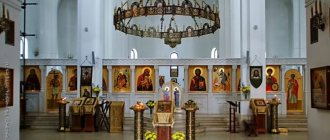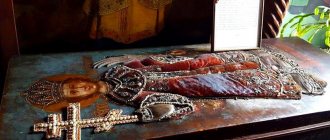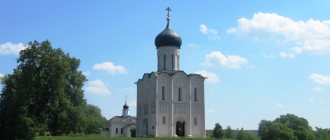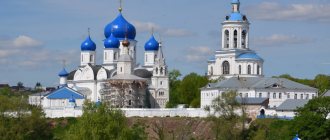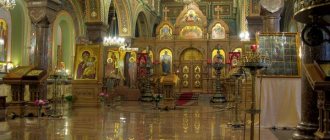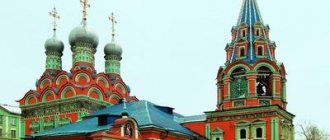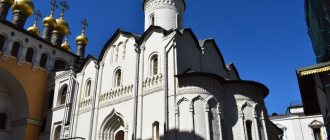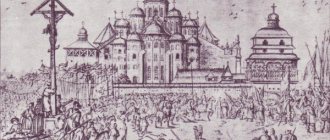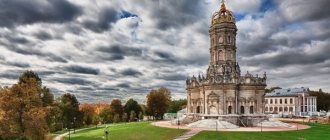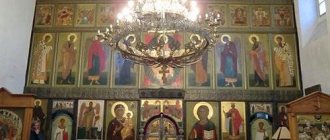Mir
Russia Vladimir Region Church of the Intercession on the Nerl (Bogolyubovo) Map is loading...
{"format":"leaflet","minzoom":false,"maxzoom":false,"limit":50,"offset":0,"link":"all","sort":[""], "order":[],"headers":"show","mainlabel":"","intro":"","outro":"","searchlabel":"\u2026 \u0441\u043b\u0435\ u0434\u0443\u044e\u0449\u0438\u0435 \u0440\u0435\u0437\u0443\u043b\u044c\u0442\u0430\u0442\u044b","default":"","import-annotation":false,"width ":"auto","height":"350px","centre":{"text":"","title":"""link":"""lat":56.19626939999999848396328161470592021942138671875,"lon": 40.56142220000000264690243056975305080413818359375,"icon":""},"title":"","label":"","icon":"","lines":[],"polygons":[],"circles":[ ],"rectangles":[],"copycoords":false,"static":false,"zoom":8,"defzoom":14,"layers":["OpenStreetMap"],"image layers":[] ,"overlays":[],"resizable":false,"fullscreen":true,"scrollwheelzoom":true,"cluster":false,"clustermaxzoom":9,"clusterzoomonclick":true,"clustermaxradius":80, "clusterspiderfy":true,"geojson":"","clicktarget":"","showtitle":true,"hidenamespace":false,"template":"","userparam":"","activeicon": "","pagelabel":false,"ajaxcoordproperty":"","ajaxquery":"","locations":[{"text":"\u003Cb\u003E\u003Ca href=\"/palomnik/%D0% 9F%D0%BE%D0%BA%D1%80%D0%BE%D0%B2%D1%81%D0%BA%D0%B0%D1%8F_%D1%86%D0%B5%D1%80% D0%BA%D0%BE%D0%B2%D1%8C_%D0%BD%D0%B0_%D0%9D%D0%B5%D1%80%D0%BB%D0%B8_(%D0%91%D0 %BE%D0%B3%D0%BE%D0%BB%D1%8E%D0%B1%D0%BE%D0%B2%D0%BE)\» title=\»\u041f\u043e\u043a\u0440\ ( u0411\u043e\u0433\u043e\u043b \u044e\u0431\u043e\u0432\u043e)\»\u003E\u041f\u043e\u043a\u0440\u043e\u0432\u0441\u043a\u0430\u044f \u0446\u0435\u0440\u043 a\u043e\u0432\u044c\ u043d\u0430 \u041d\u0435\u0440\u043b\u0438 (\u0411\u043e\u0433\u043e\u043b\u044e\u0431\u043e\u0432\u043e)\u003C/a\u003E\u003C /b\u003E\u003Chr/ \u003E\u003Ca href=\»/palomnik/%D0%A1%D0%B2%D0%BE%D0%B9%D1%81%D1%82%D0%B2%D0%BE:%D0%90%D0 %BD%D0%BD%D0%BE%D1%82%D0%B0%D1%86%D0%B8%D1%8F\" title=\"\u0421\u0432\u043e\u0439\u0441\u0442\u0432 \u043e:\u0410\u043d\u043d\u043e\u0442\u0430\u0446\u0438\u044f\»\u003E\u0410\u043d\u043d\u043e\u0442\u0430\u0446\u0438\u044f \u003C/a\u003E: \u0432\u044b\u0434\u0430\u044e\u0449\u0438\u0439\u0441\u044f \u043f\u0430\u043c\u044f\u0442\u043d\u0438\u043a \u0437\u043e\ u0434\u0447\u0435\u0441\u0442 \u0432\u0430 \u0432\u043b\u0430\u0434\u0438\u043c\u0438\u0440\u043e-\u0441\u0443\u0437\u0434\u0430\u043b\u044c\u0441\u043a\ u043e\u0439 \u0448\u043a\ u043e\u043b\u044b. \u0425\u0440\u0430\u043c \u0431\u044b\u043b \u0432\u043e\u0437\u0434\u0432\u0438\u0433\u043d\u0443\u0442 \u0431\u043b\u0430 \u0433\u043e\u0432\u0435\u0440 \u043d\u044b\u043c \u043a\u043d\u044f\u0437\u0435\u043c \u0410\u043d\u0434\u0440\u0435\u0435\u043c \u0411\u043e\u0433\u043e \u043b\u044e\u0431\u0441\u043a \u0438\u043c, \u043a\u043e\u0442\u043e\u0440\u044b\u0439 \u043f\u043e\u0441\u0442\u0430\u0432\u0438\u043b \u0434\u0432\u0 435\u0446\u0435\u0440\ u043a\u0432\u0438 \u043a\u0430\u043c\u0435\u043d\u043d\u044b \u0432\u043e \u0438\u043c\u044f \u0441\u0432\u044f\u0442\u044b\ u044f\u0411\u043e\u0433\u043e\ u0440\u043e\u0434\u0438\u0446\u0430\" \u043f\u0440\u0438 \u043e\u0441\u043d\u043e\u0432\u0430\u043d\u0438\u0438 \u0438\u043c \»\u0411\u043e\u0433\ u043e\u043b\u044e\u0431\u0438\u0432\u043e\u0433\u043e \u0433\u0440\u0430\u0434\u0430\" - \u0442.\u0435. \u0432 1158 \u0433\u043e\u0434\u0443.","title":"\u041f\u043e\u043a\u0440\u043e\u0432\u0441\u043a\u0430\u044f \u0446\u0435\u0440\ u043a\u043e\ u0432\u044c \u043d\u0430 \u041d\u0435\u0440\u043b\u0438 (\u0411\u043e\u0433\u043e\u043b\u044e\u0431\u043e\u0432\u043e)","link":"", "lat ":56.19626939999999848396328161470592021942138671875,"lon":40.56142220000000264690243056975305080413818359375,"icon":""}],"imageLayers ":[]}
56.191904; 40.554417
Russia, Vladimir region, Suzdal district, State historical and landscape complex of regional significance Bogolyubovsky meadow - Church of the Intercession on the Nerl
Vladimir region
Russia
Church of the Intercession on the Nerl (Intercession on the Nerl)
- a white stone temple in the Vladimir region of Russia, one and a half kilometers from Bogolyubov, an outstanding monument of architecture of the Vladimir-Suzdal school. The temple was erected by the noble prince Andrei Bogolyubsky, who erected “two stone churches in the name of the Holy Mother of God” when he founded the “God-loving city” - i.e. in 1158.
History[edit]
The traditional dating of the temple according to N.N. Voronin is 1165, based on the message from the Life of Andrei Bogolyubsky that the Church of the Intercession on the Nerl was built in memory of the deceased son of the Grand Duke Izyaslav Andreevich. Modern researchers S.V. Zagraevsky and T.P. Timofeeva, based on chronicle information, substantiate an earlier date for the temple - 1158.
Church of the Intercession on the Nerl. Reconstruction of the original view according to N. N. Voronin.
According to the Laurentian Chronicle, construction under Prince Andrei was carried out “by masters from all lands.” Tatishchev clarifies in “Russian History” that “the masters were sent from Emperor Frederick the First, with whom Andrei was on friendly terms...” (meaning Frederick Barbarossa).
The church was consecrated in honor of the Feast of the Intercession of the Virgin Mary, established in Rus' in the middle of the 12th century on the initiative of Andrei Bogolyubsky. This is probably the first Church of the Intercession in Rus'.
According to the legend contained in the Life of Andrei Bogolyubsky, the white stone for the construction of the church was taken from the Bulgarian kingdom conquered by Andrei Bogolyubsky. However, this legend is refuted both by historical facts and by the results of petrographic analyzes of the white stone used to build the church.
In 1784, due to the low profitability of the Church of the Intercession, the abbot of the Bogolyubov Monastery (to which it was assigned) tried to dismantle the temple for building material for the construction of the monastery bell tower, but lack of funds did not allow work to begin.
In 1919, ancient white stone monuments, including the Church of the Intercession, were taken under the protection of the Vladimir Provincial Collegium for Museum Affairs. In 1923, the Bogolyubov Monastery was closed, and the temple remained under the jurisdiction of the Vladimir Museum, and since 1958 - the Vladimir-Suzdal Museum-Reserve. Over the years, the white stone temple was studied archaeologically and was restored several times. So, in 1954-1955, the church was subjected to archaeological research by N. N. Voronin. Thanks to the increasing fame of the temple as the pinnacle of ancient Russian architecture, the church became the center of an excursion and tourist “boom.”
In 1980-1982, the temple was completely restored at the expense of budget funding, as a unique monument of ancient architecture. The white stone was cleaned; losses are restored; surfaces are treated with a protective compound; copper roofs, a dome and a cross were built; the interior is washed from dust and deposits. At the end of the 1980s, Vladimir restorers removed the convex roof of the early 19th century and restored the pedestal under the drum, leaving, however, the onion-shaped dome. The buildings around the church - the holy gate with a bell tower, several residential huts and sheds - had already been dismantled by this time; Only the partially destroyed Church of the Three Saints was left as a guardhouse.
Church of the Intercession on the Nerl with a 19th-century roof.
At the end of 1992, as part of the ancient Russian white stone monuments of Vladimir and Suzdal, the temple was included in the UNESCO World Heritage List. In the early or mid-1990s, the church was transferred to the Vladimir diocese as a non-parish church with a special status. At first he was assigned to the Bogolyubovsky Monastery, then to the Bogolyubovsky parish of Joachim and Anna, subordinate to the bishop, and in October 2012 he was listed as assigned to the Vladimir Nativity of the Mother of God Monastery.
In the 2000s, S.V. Zagraevsky again conducted an archaeological study of the temple. A board of trustees was formed to plan the historical and landscape complex “Bogolyubovsky Meadow - Church of the Intercession on the Nerl,” whose efforts by the end of 2006 managed to stop soil degradation and block access to the temple for illegal tourists. In 2007-2009, a repeated planned renovation was carried out, during which the external white stone walls were updated; a walking trail was built under a federal and local funding program. As part of the program for launching the high-speed train "Sapsan" over the railway tracks of the station. In Bogolyubovo, a safe pedestrian crossing with an additional electric lift was built at the expense of the Russian Railways. Bogolyubovsky Meadow became a state reserve, the movement of self-propelled vehicles on it was prohibited. Services in the temple were held only on great holidays; the rest of the day, the temple was usually open, but stood “without singing.” You could come in, light a candle, and requests were accepted. During this period, the Church of the Intercession - the “Russian miracle” - was visited by more than a million tourists a year from all over the world.
Naming the temple
Naming the church in honor of the Intercession of the Virgin Mary is an uncharacteristic phenomenon for that historical period. In Byzantine church culture there was no celebration of the Intercession; this tradition, as is commonly believed, was introduced by Prince Andrei Bogolyubsky. The first written mentions of this holiday date back to the 13th century; there is not a single source indicating the prince’s attitude towards the popularization of this biblical event. Church chronicles of the pre-Mongol period indicate that the church on the Nerl is dedicated simply to the Mother of God. Therefore, it is highly likely that the temple received its name in honor of the Intercession a century later.
The Feast of the Intercession commemorates the miracle that occurred in Constantinople in the 10th century. When the city was under siege by the Muslims, its inhabitants gathered in the temple to cry out for salvation. There was a holy fool in the temple who noticed the Mother of God herself among the worshipers. She took off her head covering and covered the parishioners. It was a symbol of intercession. The city did not surrender to the onslaught of Arab nomads.
Andrei Bogolyubsky treated the Mother of God with special respect; almost all temple buildings during his reign were dedicated to her. This was largely due to a miraculous event that happened in his life. On military campaigns, the prince certainly took a cross and icons of the Mother of God and the Savior. During the next battle with the Bulgars, these icons suddenly began to shine, this turned out to be a harbinger of the victory of the princely army.
But the temple on the Nerl is the first in Russian history to bear the name not of the Mother of God herself, but of her Intercession. Moreover, for two centuries it remained the only temple building dedicated to the miraculous event in Constantinople. The construction of Intercession churches in Rus' began only in the 14th century.
Description[edit]
The location of the temple is unique: the Church of the Intercession was built in a lowland, on a small hill located on a water meadow. Previously, near the church there was a place where the Nerl flows into the Klyazma (now the river beds have changed their position). The church was located practically on the river “spit”, forming the crossroads of the most important water trade routes.
The Church of the Intercession was built on a man-made hill. The usual strip foundation, laid at a depth of 1.6 m, is continued by the base of the walls, 3.7 m high, which were covered with clay soil of an embankment, lined with white stone. Thus, the foundation went to a depth of more than 5 m. This technology made it possible to withstand the rise of water during river floods (up to 5 m).
From the 12th century temple, the main volume has been preserved to this day without significant distortion - a small, almost square quadrangle in plan (about 10x10 m excluding apses, the side of the dome square is about 3.2 m) and the dome. The temple is of a cross-domed type, four-pillared, three-apsed, single-domed, with arched-columnar belts and perspective portals. The walls of the church are strictly vertical, but thanks to the exceptionally well-found proportions, they look inclined inward, which achieves the illusion of a greater height of the structure. In the interior, the cross-shaped pillars taper towards the top, which, given the small size of the temple, creates an additional feeling of “height” in the interior.
The divisions of the northern and southern walls of the temple are asymmetrical, the eastern spindles are very narrow. However, the sum of the protrusion of the side apses and the width of the eastern sections of the walls is almost equal to the width of the middle sections of the walls, and thanks to this, the composition of the temple looks balanced when viewed from any side. Multi-broken pilasters with half-columns on the outer side of the walls of the Church of the Intercession on the Nerl correspond to the internal blades. Their total thickness is approximately one and a half times wider than the walls, and this creates a very clear structural “drawing” of the temple.
The walls of the church are decorated with carved reliefs. The central figure in the composition of the three facades of the temple is King David the psalmist seated on the throne with a psalter in his left hand, blessing with two fingers with his right hand. The decoration uses lions, birds and women's masks.
The original interior paintings of the temple were completely lost (they were knocked down during renovation in 1877).
The sophistication of the proportions and overall harmony of the temple is noted by many researchers; The Church of the Intercession is often called the most beautiful Russian church.
Architecture
The current church is the central volume of the original building, which has passed through 900 years almost unchanged. This is a tetrahedron with a side of 10 meters, if you do not take into account the 3 apses protruding from the eastern side. The facade is recognizable thanks to the belt of high, narrow false arches, which was a distinctive feature of the appearance of other churches of the Vladimir-Suzdal principality.
When examining the building, it may seem that the walls are inclined inward, but they are all strictly vertical, and the illusion arises due to a special combination of proportions. Also, this technique visually “stretches” the walls, making them look higher than they are.
The façade is decorated with bas-reliefs made of white stone, the meaning of which is also not fully understood. There are three images of King David, sometimes called the psalmist, doves, lions, griffins carrying a doe in their claws, as well as women's heads with their hair in long braids. In total you can see 19 reliefs.
How to get there[edit]
Address:
Russia, 601270, Vladimir region, Suzdal district, Bogolyubovo village
Directions:
along the E22/M7 highway 2 km from Vladimir towards Nizhny Novgorod, at the eastern end of the fence of the Bogolyubovo Monastery, immediately after the hospital there is a traffic light and the right southern one from the highway sharply down to the Bogolyubovo railway station. In winter, it may be difficult to travel back due to ice and drifts. There is a parking lot on the site in front of the railway station, then walk through the transition to Bogolyubovsky Meadow. The church is 1.5 km away on foot along a paved path. Paid extras services for tourists: to the church in the summer on horseback, in the winter on a sleigh, in the spring flood by boat.
Current state
Currently, the temple is part of the Bogolyubovsky Meadow museum complex, which is part of the architectural reserve. Divine services are also held there. From the time of construction, external bas-reliefs and an arcature belt on the facade have survived to the present day.
The interior of the temple is distinguished by its asceticism, since it was decided not to restore the lost paintings and floor mosaics. The surrounding area is a meadow along which a path paved with slabs leads to the attraction.
Decor and interior decoration
The interior of the Cathedral of the Intercession on the Nerl is ascetically simple. Unfortunately, the frescoes from the walls were destroyed at the end of the 19th century, during the next restoration. The strict verticals of the cross-shaped pillars give the interior decoration a more ecstatic rhythm.
The stream of light pouring from the windows of the drum seems to expand and make the space under the dome more spacious. The narrow side naves, the width of which is ten times less than the height of the pillars, look like gaps. They seem to duplicate the pylons going up. Once upon a time, the floors of the temple were decorated with majolica tiles, and frescoes were placed on the walls covered with paintings. All these unique works were irretrievably lost during unprofessional restoration (1877).
If you look up from the somewhat shaded lower tier of the temple, you get the feeling that you are in a well. However, the rapid rhythm of the verticals immediately leads the eye to the dome floating in the sun’s rays. It can be assumed that our ancestors, getting into this amazing structure and raising their “eyes to grief,” felt a mystical contact with the Almighty, felt their prayer ascending to the throne of the Almighty.
Researchers believe that the vertical direction of architectural lines was not perceived so keenly in ancient times. The beauty of the icons, the decorativeness of the fresco carpet, the splendor and shine of church utensils with which Prince Andrei so loved to decorate his churches - all this attracted the eyes of the worshipers and gave a festive elegance to the interior.
Thread
Exquisite work of stone carvers decorates the façade of the building. It depicts the biblical King David, who, with a psalter in his hands (repeated three times), sits on a throne surrounded by fantastic animals: doves and eagles, lions and griffins. In addition, strict girlish masks surround the facades.
The symbolism of the carving has not yet been deciphered. Researchers suggest that lions represent symbols of strength and power. The image of a predatory animal rising on its hind legs, probably a pardus, can still be seen on the coat of arms of the city of Vladimir. Regarding the female faces, scientists agree that this may be the image of Sophia, who symbolizes self-denial and wisdom.
Stone carving is a complex and expensive job. Scientists came to the conclusion that, given the technology of that time, if one person worked on creating stone jewelry for the temple, it would have taken him at least three thousand days.
Bogolyubsky Monastery
The decision to build a new monastery was made by Prince Andrei. According to legend, he dreamed of the Mother of God standing not far from her Church. It was here that construction began. Over time, princely chambers were erected around the monastery, in which a worldly person, the prince, lived.
The complex, like the Church visible not far away, is very beautiful. White stone walls stand out among green trees, blue domes rise into the sky. The architecture of the cathedral combines twisted Byzantine motifs and Russian lightness. In the 19th century, a place was found for a cathedral on the territory designed by the architect Ton.
Money for construction, as it should be in Rus', was collected by the whole world. Under the arches of the church was kept an icon of the Mother of God, painted by a Russian artist. During Soviet times, the monastery was closed, and a museum was opened in the building. Since the late 90s, a convent has been functioning, in which over 100 nuns live.
Today the doors of the Temple are open to everyone:
- tourists can enjoy the silence inside the cathedral;
- you can go to a pond overgrown with water lilies;
- freeze, listening to the music of the bells: the subtle sounds of the small bells are echoed by the bass of the largest bell, weighing 8 tons.
Archaeological excavations
Archaeological excavations began in the Cathedral of the Intercession on the Nerl and on its territory at the end of September 1882. The burials of the sons of Prince Daniil Alexandrovich and Andrei Bogolyubsky - Boris and Izyaslav - were discovered. In addition, archaeologists discovered gutters, foundations of covered galleries, and a white stone pavement covering the temple hill.
The next excavations were carried out at the end of the 20th century, when some details of the temple complex were discovered. Archaeologist N.N. Voronin managed to draw up a plan of the structures surrounding the chapel and make several drawings of the general view of the temple. Archaeologists carried out their last research in 2004-2006. Specialists managed to stop soil degradation near the church.
